All too often, low-pressure waste steam and flash steam are simply released to atmosphere instead of being reused. This can be an unhealthy practice, since losing steam often means a loss of useable energy.
TLV’s Steam Compressor uses high efficiency ejector technology to recover and reuse this excess steam, leading to lower energy consumption and fuel costs. Incorporating a steam compressor is often a great choice to increase efficiency by reducing the need to vent steam to atmosphere.
Potential Savings
Example 1: Reuse flash steam rising from boiler feed tanks
Steam is often lost when high pressure condensate is collected in a boiler feed tank which is open to atmosphere. The sudden drop in pressure causes some of the condensate to flash into steam, resulting in energy being lost from the system.
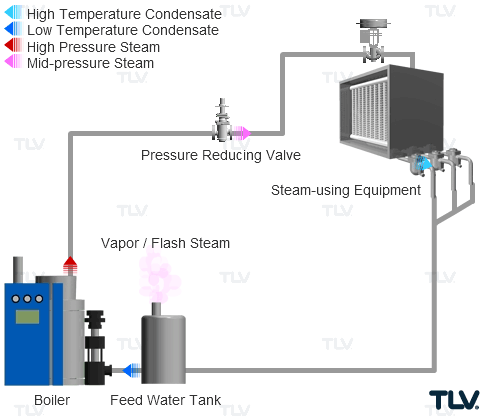
Example 2: Avoid costly periodic inspections required for pressure vessels
The cost of required pressure vessel inspections each year adds up to quite a sum of money. Since the steam compressor contains no pressure vessels, periodic inspections are not mandatory.
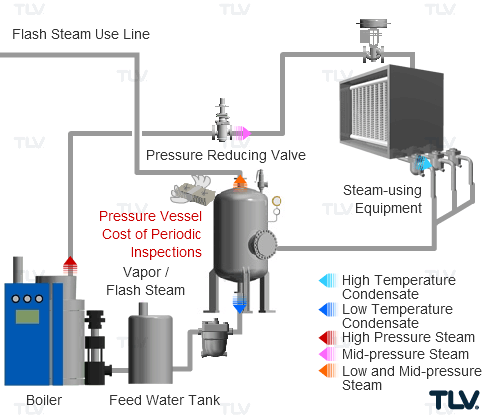
Incorporating a steam compressor system
A steam compressor can provide both of the benefits above and can be used in many different ways.
The animation below is one example of a steam compressor incorporated into a steam system.
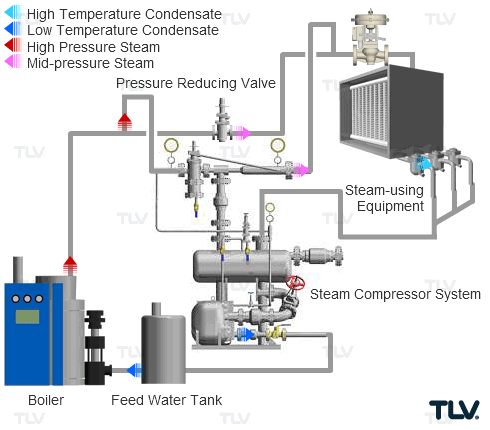
Recovery and Reuse of Excess Low Pressure Steam
Low pressure steam generated by applications such as power generation can also be recovered and reused.
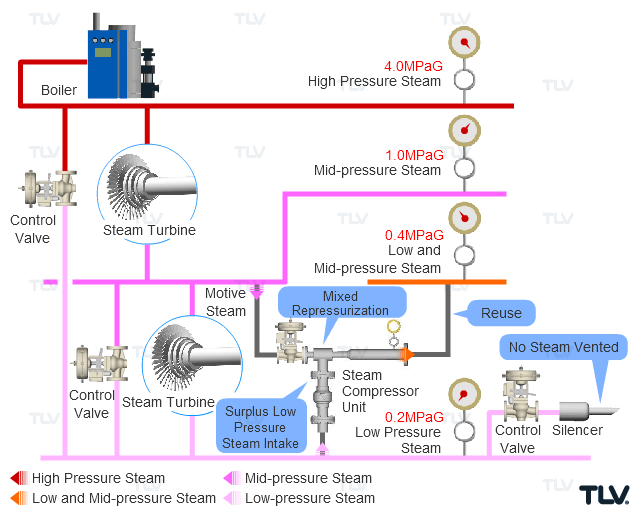
Flowmeter installation
Reason for installation
To monitor the condition of the steam compressor and to understand its impact on energy saving.
Key improvements
- Measure motive, suction, and discharge steam.
- Real-time mass flow correction is necessary because steam pressure in each system may fluctuate.
- If superheated steam is used, real-time mass flow correction using both temperature and pressure is required
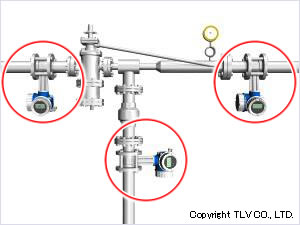
Learn more
The intake steam flow rate can be calculated by finding the difference between the discharge steam flow rate and the motive steam flow rate, but if there are fluctuations in flow or pressure, measuring each of the three systems is useful for identifying fluctuation factors and developing countermeasures.